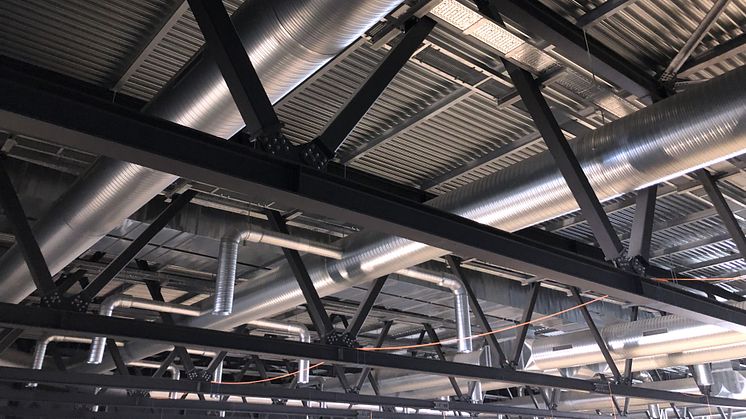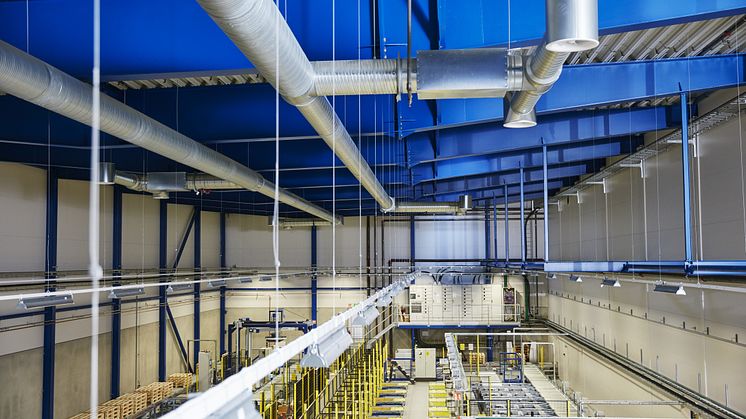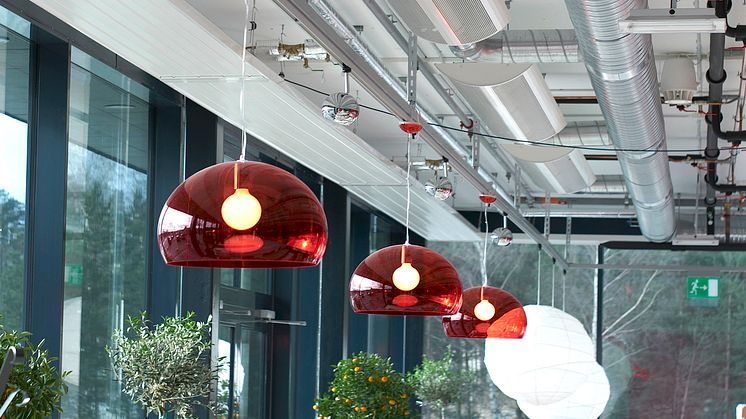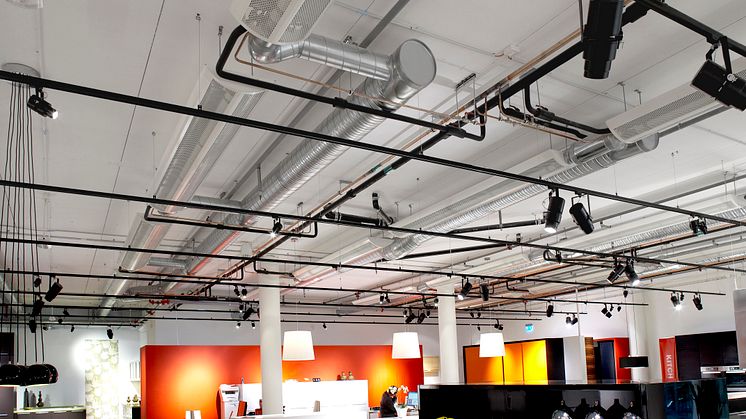
Blog post -
Improving the way we use energy- the need for air leakage legislation
Duct leakage is an overlooked, significant energy-saving opportunity
Whilst much focus has been placed over recent years on increasing the energy efficiency of air movement and conditioning plant, little or no focus has been placed on how this expensively conditioned air is transported around a building.
If hot water pipes were allowed to leak in the manner that many currently installed ductwork systems do there would be an outcry, and quite rightly. However, as air is invisible and nobody can see the leakage occurring, you don’t even need to turn a blind eye to overlook it. For very little cost, we can remedy that and make significant savings over the next 10 years.
Heating energy loss due to leaking ductwork in Belgium has been estimated at 15GWh per year (Duct Leakage in European Buildings Status and Perspectives report, FR Carrie). This does not even take into account the fan power required to deliver additional air to replace that leaking from the duct. If the energy impact estimate for Belgium is extrapolated to the rest of Europe,then it appears that the heating energy consumption due to duct leakage is approximately 0.75TWh per year in offices and 7.5TWh per year in dwellings. This gives an indication of the size of the problem and the potential in untapped energy savings.
Measuring operational airtightness of buildings will drive higher standards
The International Energy Agency Report states that: “Apart from Sweden, many countries in Europe generally have very leaky ventilation systems. Air leakage is typically three times higher than Class A, which is up to 30 times higher than air leakage seen in Sweden. Nearly all Swedish buildings and their installations meet the voluntary AMA specification guidelines referenced in building contracts between the owner and contractors.”
Contributing to the success in achieving airtight ductwork in Sweden is an increased awareness of the benefits of quality ductwork as well as guidelines provided in building contracts and verification requirements for each project with pre-defined incentives and penalties.
The rate of permissible duct leakage is given in several standards guiding the design, purchase and handing over. These standards are voluntary and if there is a requirement, it is normally in the local building code that the level of leakage is specified. Permissible leakage is split into four classes A-D with A having the highest leakage rate and D the lowest. A factor of three separates each step so Class B is three times more airtight than class A, therefore class D is 27 times more airtight than class A. It is recommended at present that Class A ductwork, which is typically installed in most offices, hotels and public buildings for example, is not tested for leakage, this compounds the problem. The TightVent conference in Nottingham on September 2017 reported that approximately one third of tested Class A systems failed to reach even this low standard with a number leaking at more than 2.5 times the permitted level for Class A.
It would appear that voluntary codes and practices are not sufficient to drive an increase in ductwork airtightness, this will only happen under legislation. Implementation of legislation to enforce testing and the introduction of a competency scheme for commercial ductwork installers, similar to that recently imposed on domestic installations, is required. A register of tested installations would enable the tracking of certification and improvement. The leakage classification of any ductwork installed within commercial buildings should be required to be displayed as part of a commercial building’s Energy Performance Certificate.There is also new European initiative following Article 19a of the EPBD Directive 2018/844/EU to regulate inspection of ventilation systems, Perhaps airtightness can be a part of this and further drive the local legislation in the right direction.
An immediate increase in the required Ductwork Airtightness Standard, with class B as the minimum acceptable standard for all buildings would have a considerable impact on energy saving. In this respect the maths speaks for itself; if you are reducing air leakage from ductwork by a factor of 3 for the majority of buildings then, quite obviously there has to be a correlation to energy saving. A stepped introduction of tighter ductwork requirements over the next 10 years with a final objective of class C as a minimum standard should be the aspiration.
Implementation of simple measures without the need for any new products or technology will see significant energy savings
The advantage with this proposal is that no barriers exist; both the technology and the products already exist in the market place. The only requirement is for government to drive Building Standard upwards. In Sweden for many years ducting components have been required to be “type approved” to demonstrate their airtightness. Very few similar requirement exists in other countries, and as a result, there is no requirement to demonstrate airtightness of ducting components. Now that a Eurovent Certification program exists for ducting components, the same exercise can easily be applied in all countries.
High performance airtight HVAC systems are achieved in Sweden through the installation of circular ducts with reinforcing spiral lockseams and ducting components with integrated rubber gaskets capable of providing an airtightness of Class D. These products are already available on the European market. Lindab have invested in securing Eurovent Certification for our Safe Seal ducting components to provide third party accreditation to the fact that, when correctly installed, they will provide Class D leakage rate.
The main barrier at present, is perceived increased cost of construction. Reports (such as BISRIA report ref Report No. 51681/04) have shown that using pre-sealed ducting components can in fact reduce installation costs for circular ductwork systems. Ductwork contractors will see this as a welcome opportunity to raise standards within their industry and remove any acceptance of poor workmanship from less reputable installers.
Businesses are able to influence the energy efficiency performance of new buildings
End users stand to gain the most from an energy efficient building, however, with the exception of large corporations, end users are rarely involved in the selection of plant at the design and construction stage. An introduction of certification on all new buildings would drive selection of more airtight, energy efficient designs.
Currently most designers make an allowance in all air movement and conditioning plant for leakage, in the majority of cases this is around 10%. If we can guarantee an airtight delivery system then we can remove this 10% allowance, resulting in a downsizing of plant, lower energy consumption and lower installation costs.
More precise measurements of airflow within ductwork, using the latest digital technologies, allows systems to react to demand in a far more precise way than ever before, ensuring just the right amount of air is delivered to any one location to meet the demands at that location. This in turn allows plant to be ramped up and down in tune with demand. Assuming duct leakage is reduced, or ideally eliminated, then a true picture of energy consumption can be produced and represented digitally. This would allow, for example, proportional charging of services such as heating and air conditioning to clients in a multi-occupancy building. This would make individual tenants responsible and aware of their energy consumption, driving a call for being as energy efficient as possible.
HVAC ventilation systems in shops, schools, offices, public buildings, factories and marine installations and the residential sector, would all benefit from an increase in ductwork airtightness. In fact; there is hardly a building that could not improve its energy efficiency simply by stopping the ductwork from leaking.
Contact
Andy Watton
National Sales Manager
andy.watton@lindab.com



